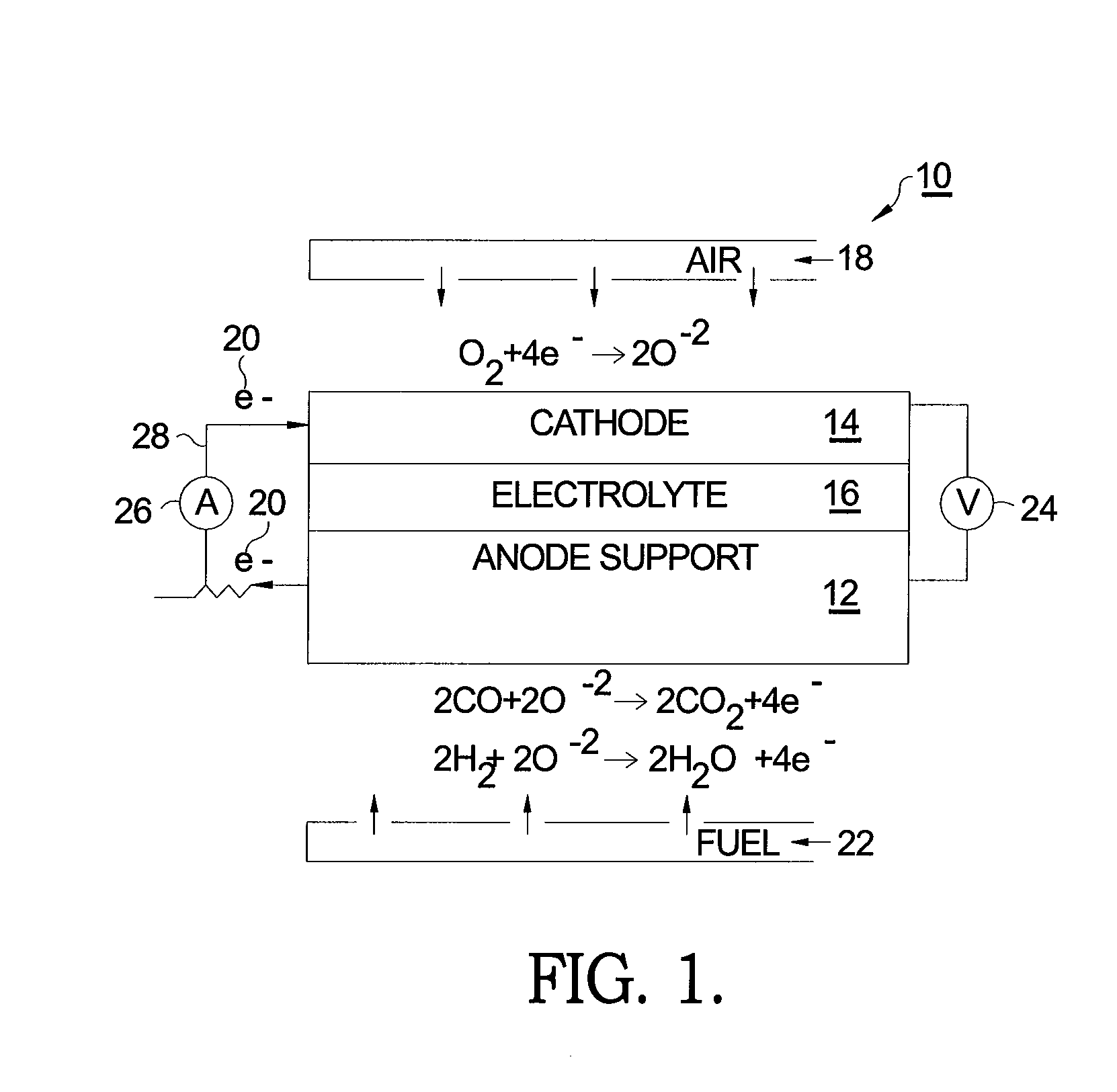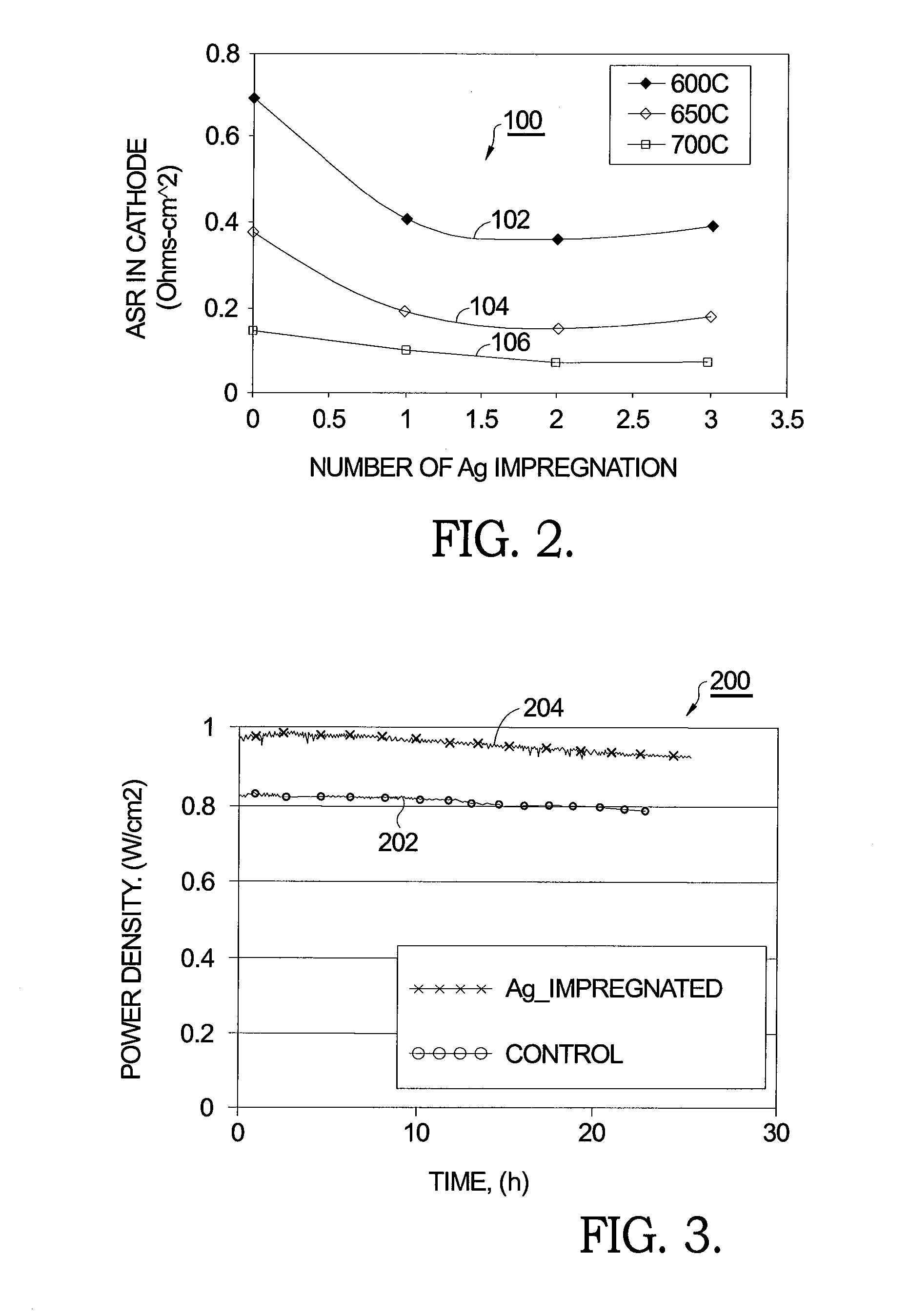Method for Impregnating a Solid Oxide Fuel Cell Cathode with Silver to Reduce Electrical Resistance
a solid oxide fuel cell and silver-ion-based technology, applied in cell components, electrochemical generators, alkaline accumulator electrodes, etc., can solve the problems of significant material limitations and problems and the performance of cathode sintered at 920° c. with ag powder and ag/sub>0 was inferior to that o
- Summary
- Abstract
- Description
- Claims
- Application Information
AI Technical Summary
Benefits of technology
Problems solved by technology
Method used
Image
Examples
Embodiment Construction
[0015]Referring to FIG. 1, a prior art SOFC 10 comprises a supportive anode 12, a cathode 14, and an intervening electrolyte 16. In operation under proper operating temperature, molecular oxygen (O2) within cathode 14 (typically in the form of air 18) accepts two electrons 20 per atom of oxygen. The ionized oxygen atoms (O−2) migrate selectively through the electrolyte to the anode where they oxidize fuel 22 in the form of hydrogen (H2) and carbon monoxide (CO) to produce water (H2O) and carbon dioxide (CO2), respectively, thereby creating a voltage difference 24 causing current 26 to flow in an external circuit 28 from anode 12 to cathode 14.
[0016]As reported in the literature and noted above, using AgNO3 as a precursor for emplacing Ag° in an SOFC cathode has been shown to have a detrimental effect on cathode performance and therefore is deemed unsuccessful in the prior art in meeting the goal of reduced cathode resistance and increased cell power density. It has been confirmed th...
PUM
| Property | Measurement | Unit |
|---|---|---|
| temperature | aaaaa | aaaaa |
| temperature | aaaaa | aaaaa |
| weight percent | aaaaa | aaaaa |
Abstract
Description
Claims
Application Information
 Login to View More
Login to View More - R&D
- Intellectual Property
- Life Sciences
- Materials
- Tech Scout
- Unparalleled Data Quality
- Higher Quality Content
- 60% Fewer Hallucinations
Browse by: Latest US Patents, China's latest patents, Technical Efficacy Thesaurus, Application Domain, Technology Topic, Popular Technical Reports.
© 2025 PatSnap. All rights reserved.Legal|Privacy policy|Modern Slavery Act Transparency Statement|Sitemap|About US| Contact US: help@patsnap.com



